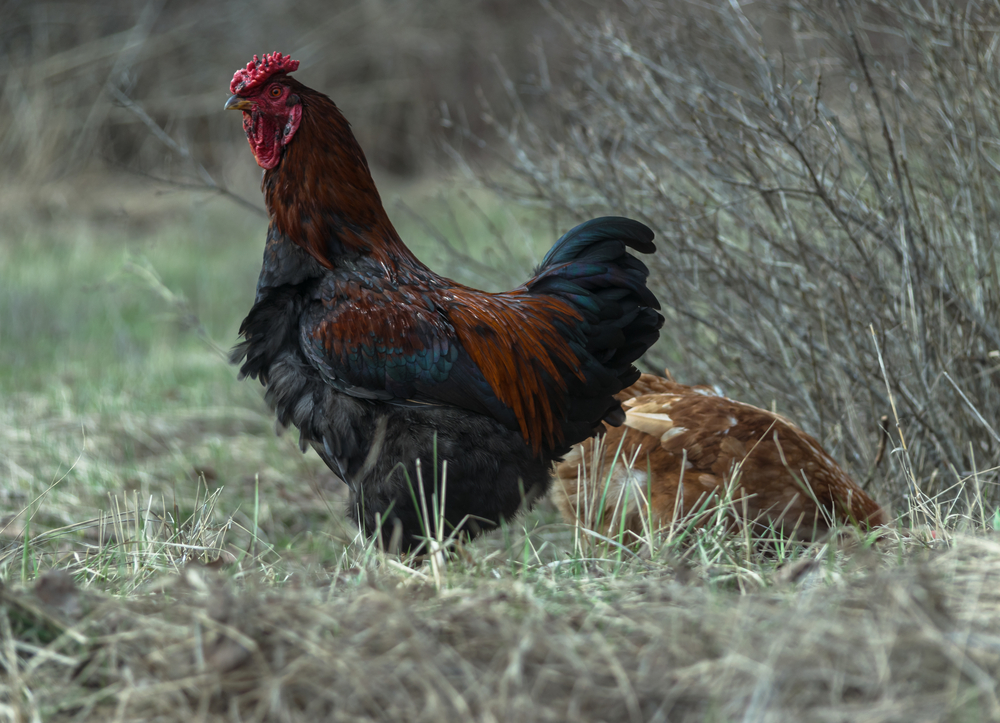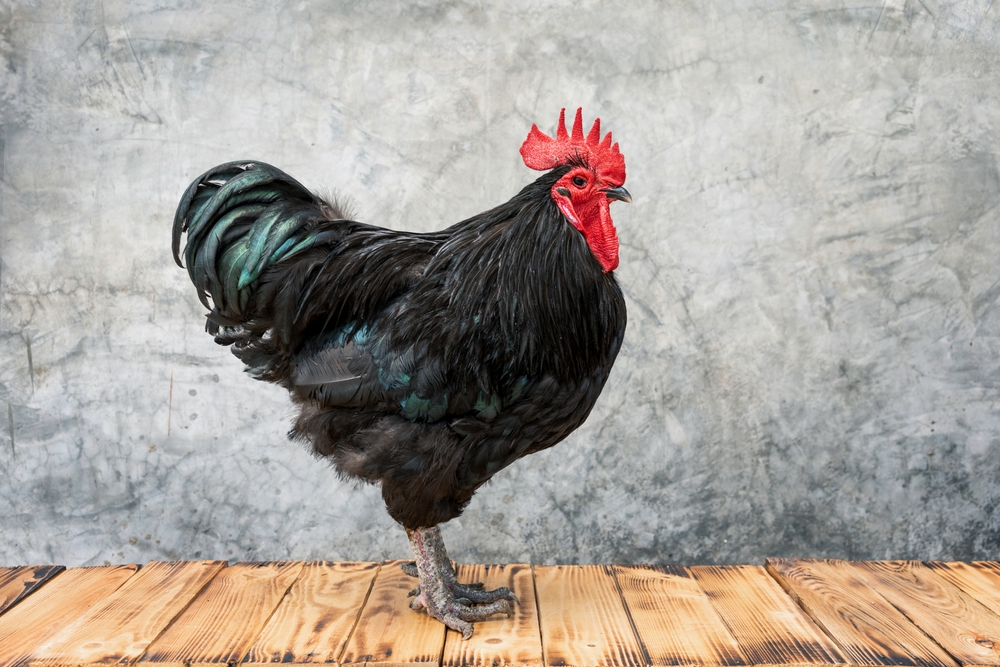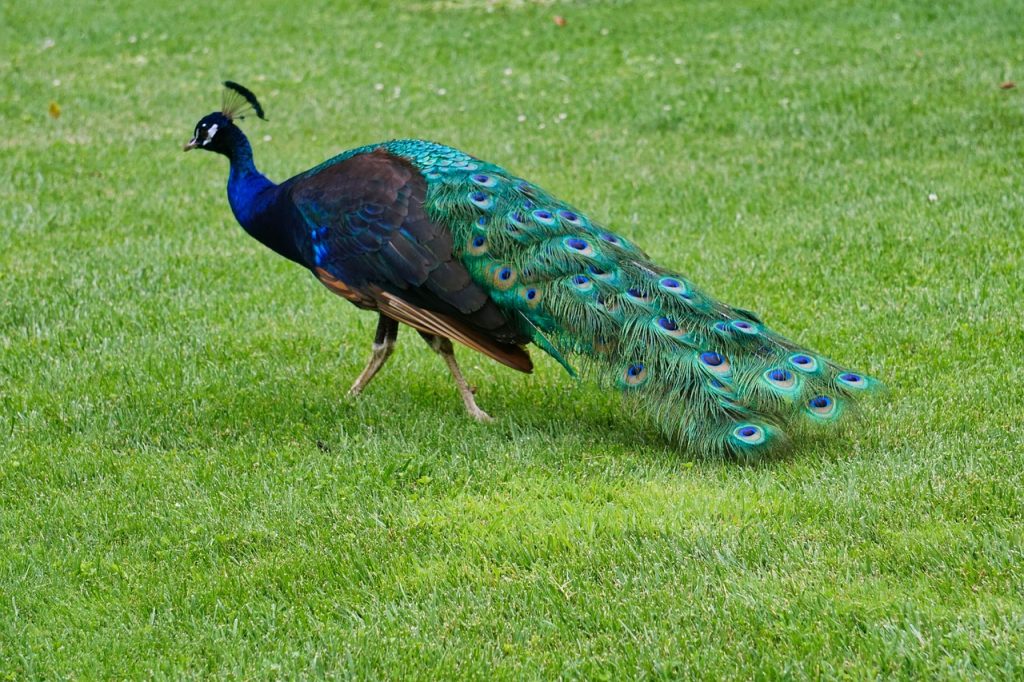The closest relative to the Barnevelder is the Brahma, one of the breeds used in its original development. Other close contributors include the Cochin and Langshan, which provided body size, feather quality, and hardiness, making the Barnevelder a distinctive Dutch dual-purpose breed.
About
The Barnevelder is a hardy, dual-purpose chicken breed that originated in the town of Barneveld, the Netherlands, in the late 19th and early 20th centuries. It was developed by crossing local Dutch chickens with imported breeds such as Brahmas, Cochins, and possibly Langshans, producing a bird valued for both its attractive plumage and reliable egg production.
Barnevelders are best known for their striking double-laced feather pattern, most famously in the double-laced partridge variety, where each rich brown feather is neatly outlined in black. Other varieties, including black, white, and silver-laced, also exist, though they are less common.
They are medium-sized birds, with hens weighing about 2.5–3 kg (5.5–6.5 lbs) and roosters reaching 3.5–3.9 kg (7.5–8.5 lbs). Barnevelders are steady layers of 150–200 large brown eggs annually, and their eggshells are often a deep, rich brown—highly prized by poultry keepers.
This breed is docile, calm, and adaptable, making it suitable for both free-range and confined conditions. They tolerate cold weather well and are known to continue laying through winter when some other breeds slow down. Their gentle nature makes them good for mixed flocks and family farms.
As a table bird, the Barnevelder produces flavorful, well-textured meat, though they are slower-growing than commercial hybrids. Their combination of utility, beauty, and manageable temperament has earned them popularity worldwide among smallholders and poultry enthusiasts.
The Barnevelder’s scientific classification is Gallus gallus domesticus, and it belongs to the family Phasianidae.
Physical Characteristics
Plumage:
Barnevelders are most famous for their striking double-laced feather pattern—each feather has a rich brown base with a glossy black edge, giving the bird a beautifully scalloped appearance. The plumage lies close to the body and has a soft sheen. Other recognized varieties include black, white, silver double-laced, and blue double-laced.
Head and Comb:
The head is of medium size with a single, upright comb that has 5 well-defined points. The comb, wattles, and earlobes are bright red, providing contrast against the darker plumage. The beak is short, strong, and usually horn-colored or yellowish-brown, and the eyes are orange to red-brown.
Body:
Barnevelders have a broad, deep body with a full breast and a long, slightly arched back. The frame is sturdy yet elegant, reflecting their dual-purpose role for eggs and meat. Their posture is upright but well-balanced.
Legs and Feet:
The legs are clean (feather-free), strong, and yellow to horn-colored. The feet have four toes, and the soles are typically white or pinkish.
Tail:
The tail is short to medium in length and well-feathered, carried at a moderate angle. Roosters have attractive sickle feathers, while hens’ tails are more compact.
Size:
-
Male Weight: 7 to 8 lbs (3.2 to 3.6 kg)
-
Female Weight: 5.5 to 6.5 lbs (2.5 to 3 kg)
-
Bantam Variety: Males around 2.4 lbs (1.1 kg), females around 2 lbs (0.9 kg)
Sexual Dimorphism:
Males are larger with more prominent combs, longer tail feathers, and more iridescent black in their plumage. Females display the most striking and consistent double-laced pattern.
Barnevelders’ combination of unique feather lacing, balanced body shape, and sturdy build makes them one of the most attractive and distinctive dual-purpose chicken breeds in the world.
Reproduction
Mating Behavior:
Barnevelders are generally calm and sociable, making breeding straightforward in both free-range and confined settings. A single rooster can manage a breeding group of 8 to 12 hens. Courtship behavior includes the rooster performing tidbitting—calling and offering food to hens—followed by mounting for mating.
Breeding Season:
While capable of breeding year-round in mild climates, Barnevelders are most reproductively active in spring and early summer. They are good winter layers compared to many breeds, and extended daylight hours (natural or artificial) help maintain fertility and egg production.
Egg Laying:
Barnevelders are valued for both their beauty and their productive laying ability.
-
Annual Output: Around 180 to 200 medium-to-large eggs per year.
-
Egg Color: Distinctive dark brown to chocolate brown, often with a reddish hue.
-
Egg Size: Medium to large.
Broodiness and Incubation:
-
Barnevelder hens are moderately broody—some will go broody readily, while others rarely do.
-
Broody hens tend to be attentive mothers once chicks hatch.
-
Incubation Period: About 21 days, with the hen maintaining warmth and turning the eggs regularly.
Chicks:
-
Appearance at Hatch: Fluffy, with shades of brown, black, and sometimes yellow markings.
-
Self-Sufficiency: Active and able to feed within hours of hatching.
-
Growth Rate: Moderate growth, reaching point-of-lay at 5.5 to 6.5 months.
Maturity:
Roosters reach sexual maturity at around 6 months, while hens begin laying at approximately 5.5 to 6.5 months.
Barnevelders’ combination of attractive egg color, good fertility, and moderate broodiness makes them a practical choice for small-scale farms and backyard breeders who value both productivity and appearance.
Lifespan
Lifespan in the Wild/Farm Setting:
As a domesticated poultry breed, Barnevelders are kept in managed environments rather than the wild. In well-maintained backyard or small farm settings, they generally live 5 to 8 years. Their most productive laying years are typically the first 3 to 4 years, after which egg production gradually declines, though hens may still lay occasionally.
Lifespan in Optimal Conditions:
With excellent nutrition, predator protection, and veterinary care, Barnevelders can live longer than the average farm lifespan.
-
Average Maximum Lifespan: 8 to 10 years
-
Exceptional cases: 10+ years, particularly when kept more as ornamental or companion birds rather than for commercial egg production.
Threats to Longevity:
-
Predation: Vulnerable to foxes, hawks, raccoons, and dogs in free-range settings.
-
Reproductive Strain: Continuous laying without rest periods can lead to reproductive tract issues, such as egg binding or prolapse.
-
Disease and Parasites: Susceptible to mites, lice, worms, and common poultry diseases like Marek’s disease, avian influenza, and respiratory infections.
-
Environmental Stress: Poor ventilation, overcrowding, and exposure to extreme weather can reduce lifespan.
Barnevelders are hardy and adaptable birds, particularly in colder climates, and with proper housing, nutrition, and care, they can remain healthy and active well into their later years.
Eating Habits
Diet:
Barnevelders are omnivorous foragers that thrive on a combination of balanced poultry feed and naturally sourced foods.
-
Primary Feed: High-quality layer pellets or mash containing 16–18% protein, calcium for strong eggshells, and essential vitamins.
-
Foraged Foods: Insects, worms, seeds, grasses, weeds, and small invertebrates found while scratching in soil and vegetation.
-
Treats and Supplements: Whole grains (wheat, oats, corn), vegetable scraps, grit to aid digestion, and oyster shell or crushed limestone for calcium.
Feeding Behavior:
-
Barnevelders are active yet methodical foragers, scratching through grass and dirt to uncover insects and seeds.
-
Their calm temperament makes them good feeders in mixed flocks, with minimal aggression at food sources.
-
They require constant access to clean, fresh water, especially during warm weather and peak laying periods.
Foraging Times:
-
Most active during morning and late afternoon foraging sessions.
-
They often spend the midday hours dust-bathing or resting, resuming feeding as temperatures cool.
Adaptations for Feeding:
-
Short, sturdy beaks well-suited to pecking grains and dislodging small prey from the ground.
-
Keen eyesight allows them to spot food items even in dense grass or shaded areas.
Captive Diet Management:
-
A diet based primarily on layer feed with seasonal fresh greens and insect protein maintains optimal health and egg production.
-
Overfeeding grain treats can cause weight gain and reduced laying efficiency.
Barnevelders’ balanced feeding instincts, strong foraging skills, and calm feeding habits make them an easy-to-manage breed in both free-range and enclosed coop systems.
Uniqueness
Striking Double-Laced Plumage:
The Barnevelder is renowned for its double-laced feather pattern, where each rich brown feather is outlined with a glossy black edge. This pattern is most vivid in hens and is a defining feature in poultry shows worldwide.
Chocolate-Brown Eggs:
One of the breed’s standout traits is its ability to lay dark brown eggs with a reddish or chocolate hue—highly prized by backyard keepers and specialty egg markets.
Cold-Weather Laying Ability:
Unlike many chicken breeds whose laying slows significantly in winter, Barnevelders are known for their reliable egg production in colder months, making them valuable for year-round egg supply in temperate and cool climates.
Calm and Friendly Nature:
Barnevelders are docile, gentle, and easily handled, making them suitable for families, children, and beginner poultry keepers. They are also well-suited for mixed flocks due to their non-aggressive temperament.
Dutch Agricultural Heritage:
Developed in the town of Barneveld in the Netherlands during the late 19th and early 20th centuries, the breed was created by crossing local Dutch chickens with imported breeds such as Brahmas, Cochins, and Langshans to improve both appearance and productivity.
Dual-Purpose Breed:
Barnevelders are raised for both attractive appearance and practical output, offering a good balance between egg-laying performance and meat quality.
Show and Exhibition Popularity:
Because of their distinctive plumage and attractive build, Barnevelders are a favorite in poultry exhibitions, often winning prizes for their pattern clarity and sheen.
The Barnevelder’s ornamental beauty, unique egg color, cold-weather productivity, and gentle nature make it a standout among dual-purpose heritage chicken breeds.
Be the First to Share Photos of This Species.
FAQ’s
1. What is the closest species to the Barnevelder?
2. How does the Barnevelder compare to other chickens?
The Barnevelder stands out for its:
-
Unique double-laced plumage not found in most breeds.
-
Ability to lay chocolate-brown eggs, rivaling Marans in egg color.
-
Reliable winter egg production, unlike many ornamental or heritage breeds that slow significantly in cold months.
-
Gentle temperament, making it easier to manage in mixed flocks compared to more assertive breeds like Rhode Island Reds.
It blends ornamental value with solid productivity, a combination not common in show-quality chickens.
3. What national parks provide the best chances to see a Barnevelder?
As a domesticated poultry breed, Barnevelders are not found in the wild. However, they are sometimes kept in heritage farms, agricultural displays, and open-air museums located within or near parklands, such as:
-
Zuiderzeemuseum (Netherlands – living history museum)
-
Openluchtmuseum Arnhem (Netherlands – historic farm displays)
-
Beamish Open Air Museum (United Kingdom – rare breed poultry section)
-
Old Sturbridge Village (Massachusetts, USA – heritage farming)
-
Sovereign Hill (Victoria, Australia – heritage livestock displays)
These settings preserve the breed as part of agricultural heritage rather than as free-ranging wildlife.





































































